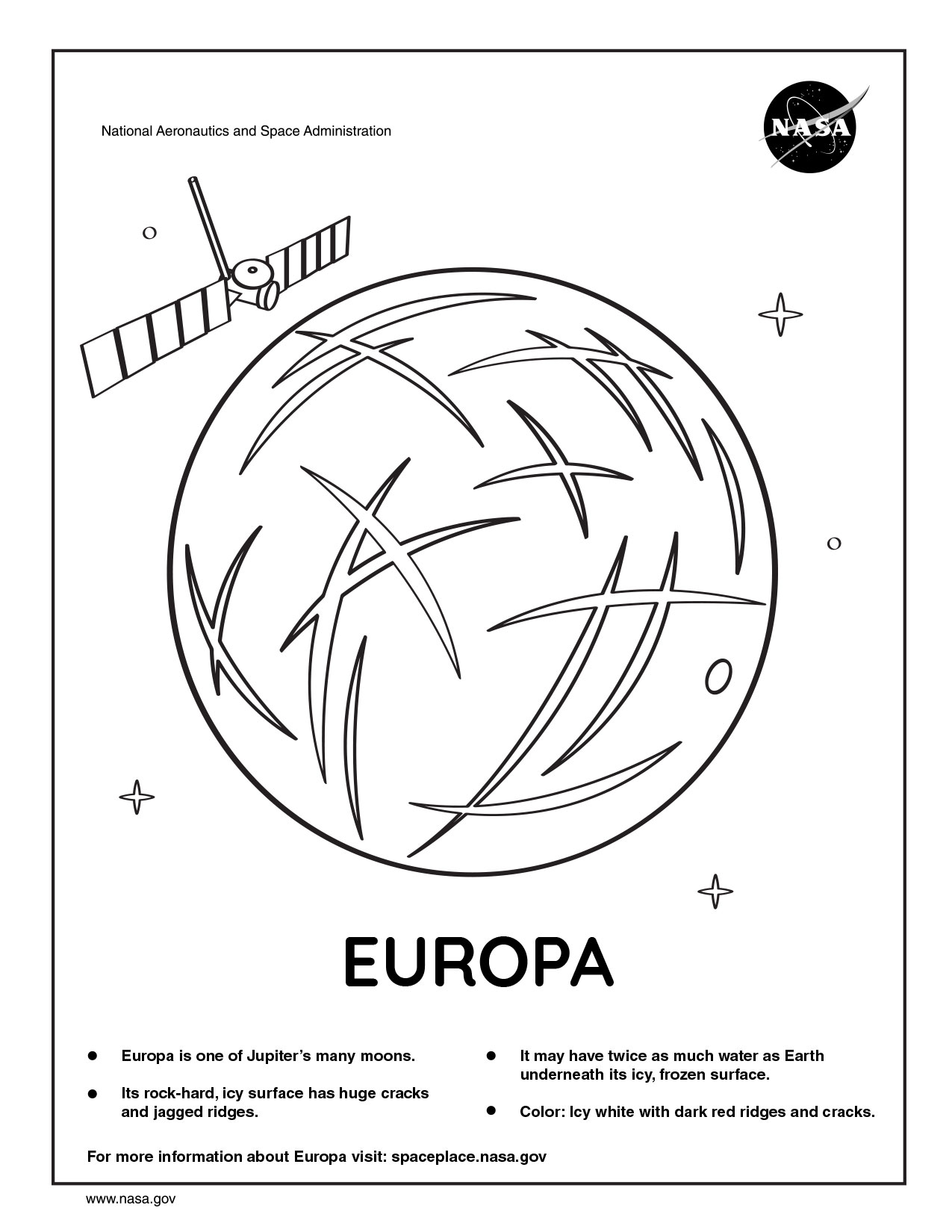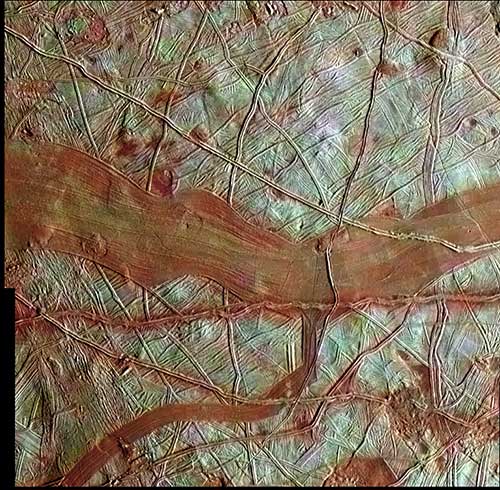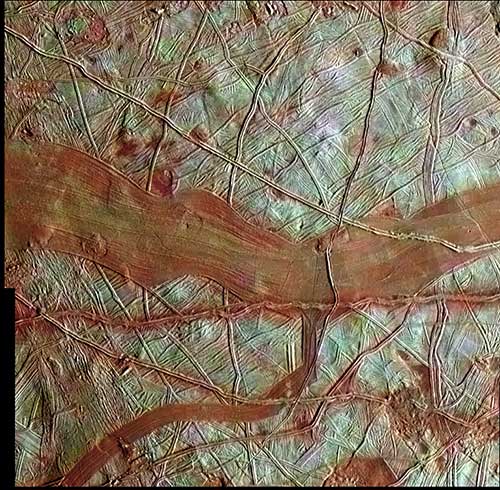What is Europa?

Credit: NASA/JPL-Caltech

This image of Jupiter's beautiful moon Europa was taken by the Galileo Orbiter spacecraft in 1998. Credit: Galileo Project/JPL/NASA
There are a few places in our solar system where scientists think it might be possible to find life beyond Earth. Jupiter’s moon Europa is one of those places.
It is a long way from the Sun—more than five times farther than the distance between Earth and the Sun. It is so cold on Europa that water on the surface of the moon is frozen as hard as rock. We can usually crack our Earth's winter ice with an ice pick. On Europa, it would take a jack hammer!
What is Europa like?
Europa is smaller and colder than Earth. It’s slightly smaller in size than Earth’s Moon. It’s so cold because it’s a long way from the Sun—more than five times farther than the distance between the Sun and Earth.
Water is a key ingredient for life. Scientists think that Europa has lots of water. In fact, it might have more than twice as much water as Earth. However, it’s so cold there that any water on the surface is frozen as hard as rock.
What could possibly live there?

An illustration of what it might look like if you were standing on Europa's frozen surface. Image credit: NASA/JPL-Caltech
NASA’s Galileo mission found good evidence that underneath this rock-hard, icy crust there is a huge, salty, liquid ocean. Since there are lots of tiny creatures that live in very harsh water environments here on Earth, it's possible that this type of life could also exist on Europa.
What keeps the water under the ice in liquid form if the surface is so cold?
Europa's tides prevent it from freezing solid. On Earth, tides are caused by the gravitational pull of the Moon. On Europa, tides are caused by the tremendous gravitational pull of Jupiter. This gravitational pull is also what holds Europa in orbit around Jupiter.

Evidence from NASA’s Galileo mission suggested that there might be a liquid water ocean underneath Europa’s icy crust. Image credit: NASA/JPL
Just like Earth’s Moon, one side of Europa is gravitationally locked to Jupiter. That means Europa always has the same side facing Jupiter as it orbits. Its orbit is also not a perfect circle. So, sometimes Europa is farther away from Jupiter and sometimes it is closer.
Jupiter's strong gravity constantly tugs on Europa. The pull is strongest on the side that always faces Jupiter. When Europa is close to Jupiter in its orbit, Jupiter’s gravity pulls even harder on this side. When Europa is farther away, the pull is less strong. That means Europa is constantly stretching as it orbits Jupiter.
Gravitational pulls from a couple of Jupiter’s other large moons, Io and Ganymede, tug on Europa, too. The pull of these moons also changes the shape of Europa’s orbit around Jupiter. This is one reason why Europa’s orbit is not circular and is always changing.

The arrows coming out of Europa in this illustration are called vectors. They represent the strength and direction of tug of Jupiter and the other moons on Europa. The strength of the gravitational pull changes as the distances and directions from Europa to the moons change.
As gravitational pulls tug Europa this way and that, the friction from all this flexing creates internal heat. This heat keeps the water under the surface liquid, and liquid water is necessary for life.
How will NASA study Europa?
NASA is building a spacecraft to visit Europa, called Europa Clipper. This mission will travel to Europa and investigate whether the icy moon could harbor conditions suitable for life.
Related Resources
Make a Colorful Crayon Europa with Textures!






